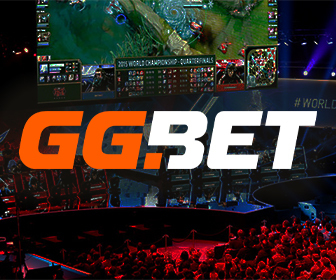Game design continues to evolve rapidly, driven by both player expectations and the accelerating pace of technology. Developers must now balance mechanical depth with accessibility, storytelling with interactivity, and innovation with monetization strategies. This ongoing transformation makes game development one of the most creatively and technically demanding fields in the entertainment sector.
One classic example of refined simplicity in interactive experiences is the thimbles game. Despite its minimalistic interface, it demonstrates how suspense and prediction mechanics can engage players without the need for elaborate graphics or storylines. Such titles remind us that great game design often lies in balancing tension, clarity, and reward.
Understanding Core Game Mechanics
Designing a compelling experience begins with establishing strong foundational mechanics. These are the rules and systems that define how players interact with the virtual environment. Whether you’re building a platformer, an RPG, or a multiplayer arena title, the core mechanics dictate the feel and flow of gameplay.
Player movement, resource management, combat systems, puzzle-solving, and progression loops all fall into this category. Successful games often revolve around one or two core interactions that are iterated and expanded upon. These systems must be intuitive but offer enough complexity to maintain interest over time.
Emergent Gameplay and Systemic Design
Modern development emphasizes systemic design—creating rules and elements that interact in unpredictable ways. This approach leads to emergent gameplay, where players discover unique strategies and stories based on how they combine available tools. Titles like Breath of the Wild or Hitman thrive on such design philosophies, offering players freedom without explicit instructions.
Games that support creative problem-solving through their systems also tend to see longer player engagement. By enabling flexibility, designers invite experimentation, making players feel like co-authors of their experiences.
Visual Aesthetics as a Design Layer
While gameplay is paramount, visuals are not mere decoration. Art direction plays a critical role in conveying tone, guiding player behavior, and supporting user interface clarity. From pixel art indies to high-fidelity AAA productions, visual choices should align with the game’s mechanics and narrative goals.
Consistency in visual style improves player immersion and makes complex mechanics easier to parse. Color coding, character silhouettes, and animation timing can subtly communicate state changes, enemy behavior, or progression cues. These visual indicators often reduce the need for excessive tutorials or intrusive HUD elements.
Narrative and World-Building Integration
Storytelling in games has moved beyond cutscenes and text boxes. Many modern titles employ environmental storytelling, dialogue systems, and reactive worlds that change based on player decisions. Designing a coherent narrative requires collaboration between writers, designers, and level artists to ensure the plot doesn’t disrupt interactivity.
World-building, when done well, makes the virtual environment feel alive. Lore hidden in item descriptions, side quests that reflect broader themes, and NPCs with dynamic routines all contribute to immersive storytelling. Rather than imposing a story, designers often aim to let it unfold through play.
Tools and Engines Shaping Development
The technology behind games is more accessible than ever. Engines like Unity and Unreal Engine 5 provide powerful toolsets for developers of all sizes. These platforms support real-time rendering, physics simulation, and modular programming, reducing the barrier to entry for indie creators while still scaling for large studios.
Advancements in AI, procedural generation, and cloud computing have further enhanced production workflows. Designers can now prototype ideas faster, test balancing mechanics earlier, and even simulate user behavior before launch.
Monetization and Ethical Considerations
Revenue models in gaming have sparked intense debate. From loot boxes to battle passes, how a game is monetized can affect its reception and long-term success. Developers must walk a fine line between profitability and fairness, especially when targeting younger or more vulnerable audiences.
Ethical game design involves transparent progression systems, non-exploitative incentives, and clear distinctions between skill and spending. Games that respect the player’s time and intelligence tend to build loyal communities, which is often more valuable than short-term gains.
Evolving Trends and Industry Insights
The gaming landscape is shifting constantly. Here are a few trends influencing both design and development:
- Cross-platform integration – Players expect seamless experiences across mobile, console, and PC.
- Live-service models – Games as platforms, with frequent updates, seasonal content, and player-driven economies.
- Accessibility features – More games are adopting UI scaling, colorblind modes, and difficulty customization.
- AI-generated content – Used cautiously, it can assist in creating procedural levels, enemy behavior, or even story branches.
As the industry grows, it’s becoming more inclusive and experimental. Indie developers are pushing boundaries with unique concepts, while major studios refine large-scale production pipelines. Both ends of the spectrum influence each other, leading to a richer and more diverse ecosystem.
Conclusion
Crafting a successful game involves more than just coding and creativity—it’s a multidisciplinary effort that combines storytelling, psychology, art, economics, and engineering. Understanding how these pieces fit together gives us better insight into what makes games not only entertaining but meaningful.
By examining mechanics, design principles, and broader industry trends, we uncover the deeper systems at play behind every level and character. As players become more discerning and platforms more varied, the challenge—and the excitement—of game development will only continue to grow.

